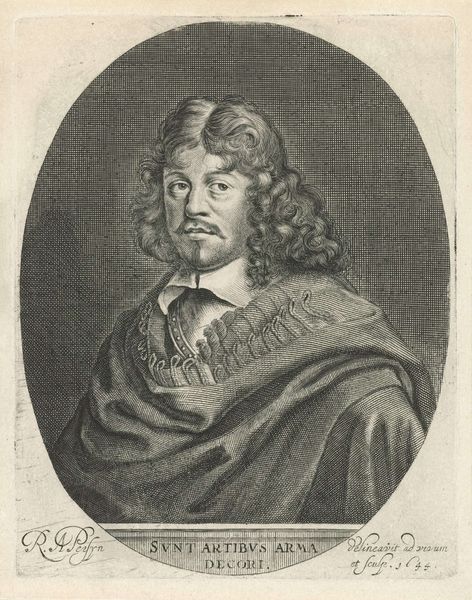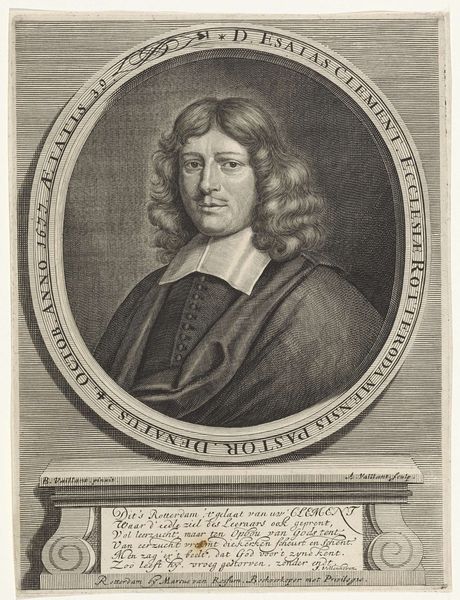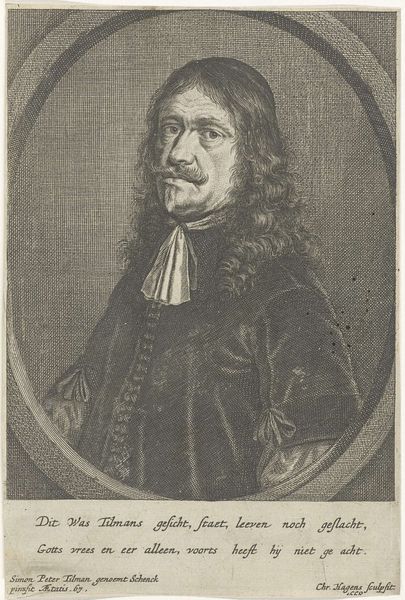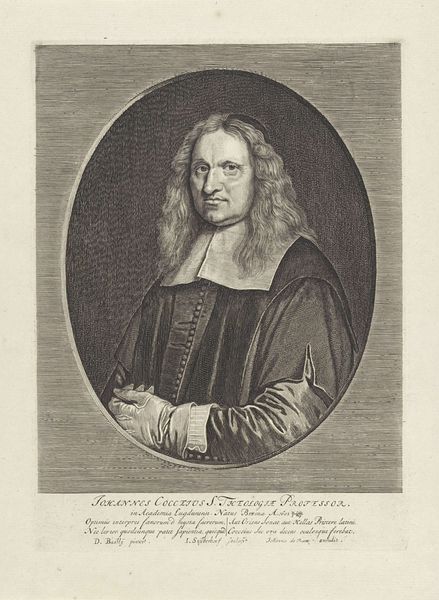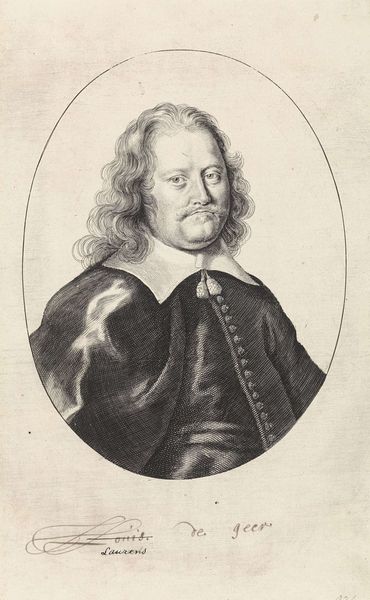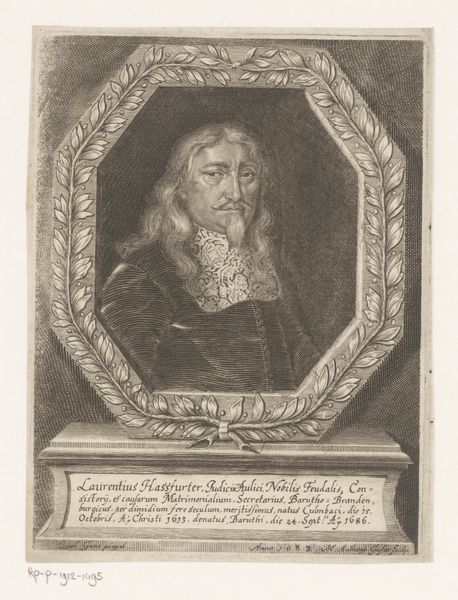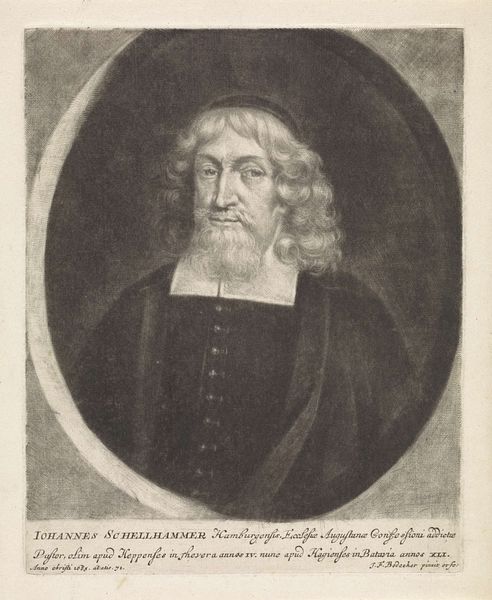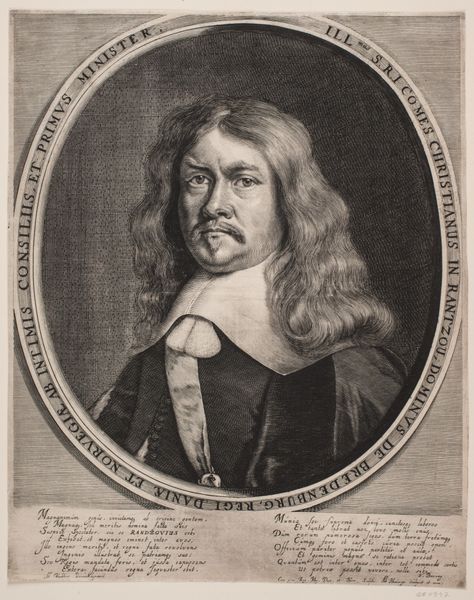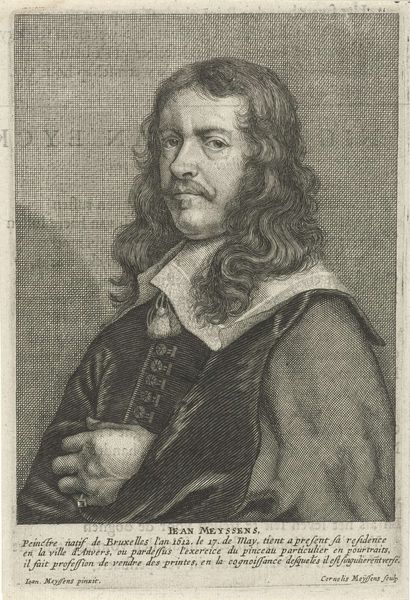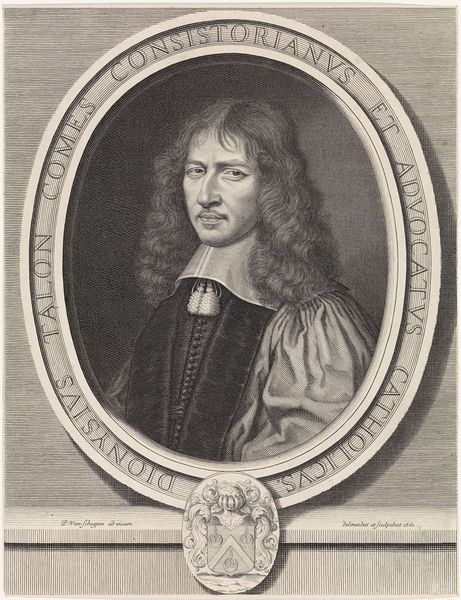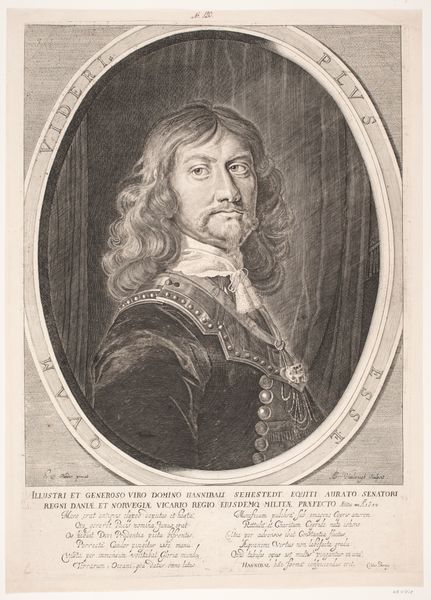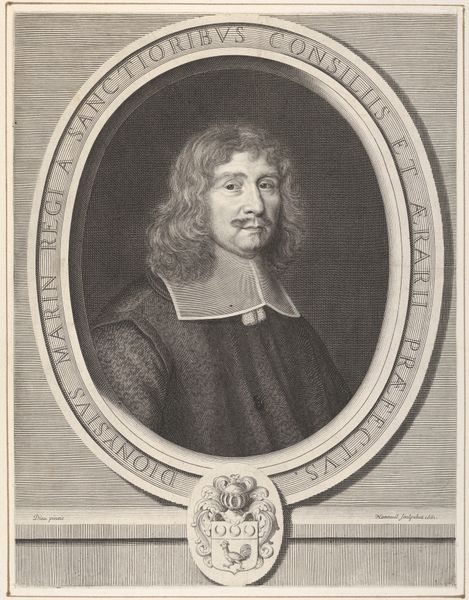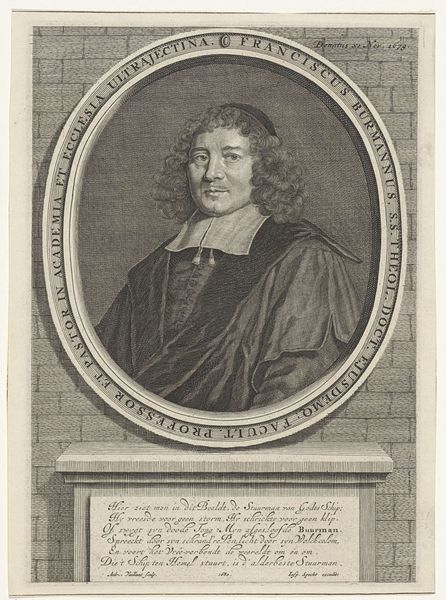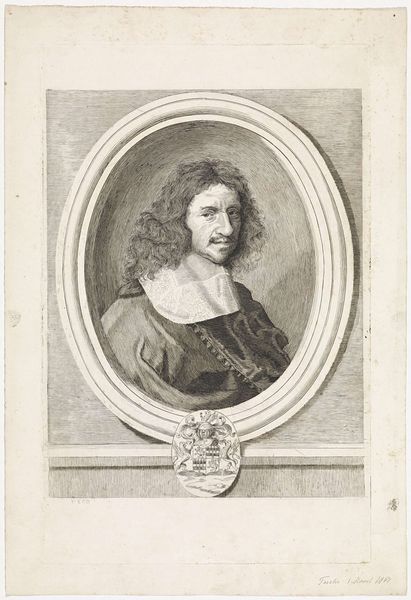
print, engraving
#
portrait
#
baroque
# print
#
pencil drawing
#
engraving
Dimensions: height 132 mm, width 94 mm
Copyright: Rijks Museum: Open Domain
Curator: What we have here is Johann Friedrich Leonard’s “Portret van Christoph Praun,” an engraving dating back to 1670. It depicts a man, presumably Christoph Praun himself, in an oval frame. Editor: My initial impression is one of somber elegance. The tight, controlled lines of the engraving lend a remarkable texture, almost a tactile quality to the portrait. The overall tonality is quite subdued, focusing attention directly on the face. Curator: Indeed, Leonard's technique with the engraving tool is meticulous. It would be fruitful to consider the production of prints at that time – the socio-economic role of reproducible imagery and how artists navigated those channels for dissemination of portraits like this one, particularly that of someone described beneath the portrait as ‘artiste amateur’ . Editor: Let’s not overlook the formality. The composition within the oval frame lends a classic, almost classical, feel. Note how the fall of light sculpts his face and cloak with subtle nuances. Semiotically, that shadow work conveys status and intelligence. The slight asymmetry enhances realism, doesn't it? Curator: Good point, although let’s think about Baroque sensibilities and patronage during this period. The production process itself hints at hierarchies - who commissioned it? Where was the paper sourced? Editor: The rendering is undeniably skillful, the texture achieved is marvelous. Curator: Perhaps this portrait was circulated amongst Praun’s inner circle, reinforcing his position in society via distributed material culture. The act of owning and displaying such a piece carried cultural weight, reflecting status and networks. Editor: I appreciate how your perspective sheds light on the broader context in which such a work gains value. For me, there’s also undeniable power in the simplicity and quiet observation within the image, a timeless appeal that still resonates today. Curator: And that resonance is shaped by historical processes! I leave now appreciating its formal and material implications so much more. Editor: Indeed, both our lenses have hopefully sharpened its reception and impact.
Comments
No comments
Be the first to comment and join the conversation on the ultimate creative platform.
